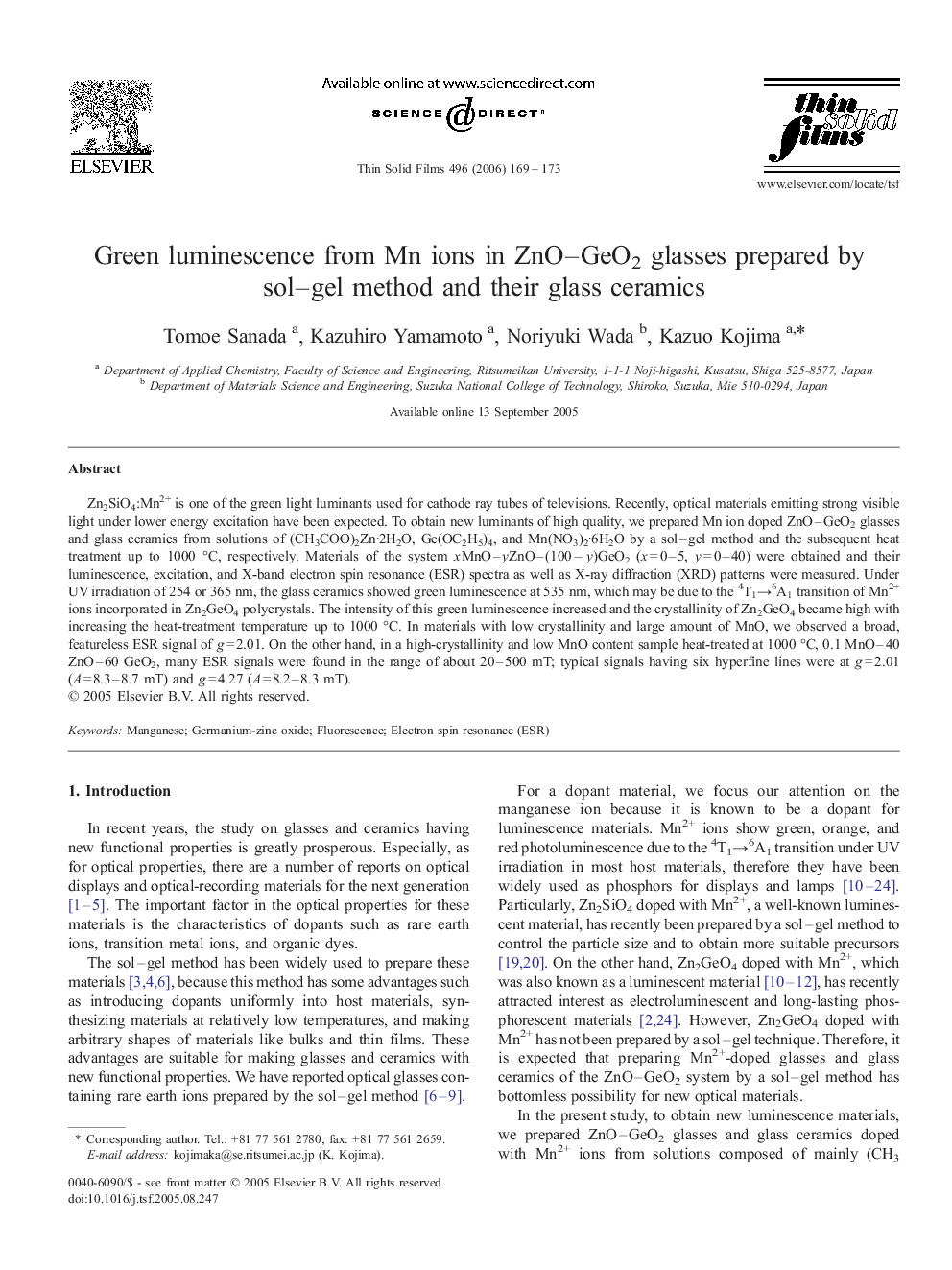| Article ID | Journal | Published Year | Pages | File Type |
|---|---|---|---|---|
| 1676078 | Thin Solid Films | 2006 | 5 Pages |
Zn2SiO4:Mn2+ is one of the green light luminants used for cathode ray tubes of televisions. Recently, optical materials emitting strong visible light under lower energy excitation have been expected. To obtain new luminants of high quality, we prepared Mn ion doped ZnO–GeO2 glasses and glass ceramics from solutions of (CH3COO)2Zn·2H2O, Ge(OC2H5)4, and Mn(NO3)2·6H2O by a sol–gel method and the subsequent heat treatment up to 1000 °C, respectively. Materials of the system xMnO–yZnO–(100 − y)GeO2 (x = 0–5, y = 0–40) were obtained and their luminescence, excitation, and X-band electron spin resonance (ESR) spectra as well as X-ray diffraction (XRD) patterns were measured. Under UV irradiation of 254 or 365 nm, the glass ceramics showed green luminescence at 535 nm, which may be due to the 4T1→6A1 transition of Mn2+ ions incorporated in Zn2GeO4 polycrystals. The intensity of this green luminescence increased and the crystallinity of Zn2GeO4 became high with increasing the heat-treatment temperature up to 1000 °C. In materials with low crystallinity and large amount of MnO, we observed a broad, featureless ESR signal of g = 2.01. On the other hand, in a high-crystallinity and low MnO content sample heat-treated at 1000 °C, 0.1 MnO–40 ZnO–60 GeO2, many ESR signals were found in the range of about 20–500 mT; typical signals having six hyperfine lines were at g = 2.01 (A = 8.3–8.7 mT) and g = 4.27 (A = 8.2–8.3 mT).
